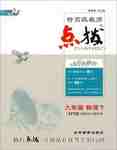题目内容
A ceremony was held ________ those killed in battle.
- A.in place of
- B.in charge of
- C.in favour of
- D.in honour of
in place of代替;in charge of负责;in favour of赞成;in honour of向……表示敬意。题意:为了向阵亡的人表示敬意,举行了一次仪式。

 特高级教师点拨系列答案
特高级教师点拨系列答案Seventeen-year-old Rivertown teenager, John Janson, was honoured at the Lifesaver Awards last night for carrying out lifesaving first aid on his neighbour after a shocking knife 36 .
John was presented with his award at a ceremony which recognized the 37 of the ten people who have saved the life of others.
John had been studying in his room when he heard 38 . When he and his father rushed outside, they 39 that Anne Slade, mother of three, had been stabbed(刺) 40 with a knife by her ex-boyfriend(前男友). The man ran from the 41 and left Ms Slade lying in her front garden 42 very heavily. Her hands had almost been cut off.
It was John’s quick 43 and knowledge of first aid that saved Ms Slade’s life. He immediately asked a number of the 44 people for bandages(绷带), but when nobody could put their hands on anything, his father got some tea towels(毛巾)and 45 from their house. John used these to dress the most severe 46 to Ms Slade’s hands. He slowed the bleeding by applying pressure to the wounds until the 47 and ambulance arrived.
“I’m 48 of what I did but I was just doing what I had been 49 ,” John said.
John had taken part in the Young Lifesaver Scheme at his high school. When 50 John, Mr Alan Southerton, Director of the Young Lifesaver Scheme, said, “ 51 is no doubt that John’s quick thinking and the first aid52 that he had learned at school saved Ms Slade’s life. It shows that a simple knowledge of the first aid can make a real 53 .”
John and the nine other lifesavers also attended a 54 reception yesterday hosted by the Prime Minister before 55 their awards last night.
| 【小题1】 |
|
| 【小题2】 |
|
| 【小题3】 |
|
| 【小题4】 |
|
| 【小题5】 |
|
| 【小题6】 |
|
| 【小题7】 |
|
| 【小题8】 |
|
| 【小题9】 |
|
| 【小题10】 |
|
| 【小题11】 |
|
| 【小题12】 |
|
| 【小题13】 |
|
| 【小题14】 |
|
| 【小题15】 |
|
| 【小题16】 |
|
| 【小题17】 |
|
| 【小题18】 |
|
| 【小题19】 |
|
| 【小题20】 |
|